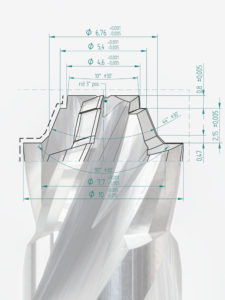Cobalt Leaching is a serious problem, now internationally recognized, sometimes found in the use of tools. This problem causes a cobalt separation in the surface state of the material. As cobalt is the aggregate used for the production of tungsten carbide, its dissipation causes a reduction in bonding and adherence between carbides (wolframic carbide and mixed carbides) and coating (PVD) with serious problems of premature wear. This process must therefore be avoided in order not to compromise the tool.
The reasons behind this process are manifold. The main ones can be traced to chemical and thermal factors. For this reason, the choice of suitable cooling lubricants used during the mechanical processing phases is essential to avoid “Cobalt Leaching”. The machining parameters (such as the flow rate of the cooling lubricant, the grinding pressure, the speed of the grinding wheel, etc.) must also be defined on the basis of the materials to be processed and the subsequent surface coatings used. To make sure that PVD coating is as effective as possible, it is necessary to analyse the entire production process in detail.

Cross-section of the TiN-coated tungsten carbide polishing which highlights the “Cobalt Leaching” phenomenon (left). The EXD-Linescan (on the right) shows how the depletion of cobalt on the surface layer of tungsten carbide undermines the aggregating bond between the carbide body and the surface coating of the tool. Under these conditions a good adhesion of the coating can not be achieved.







